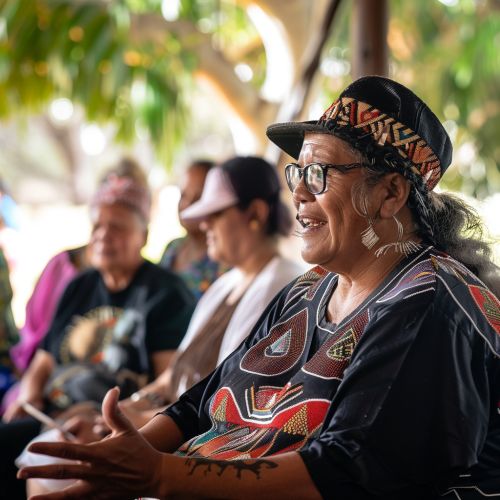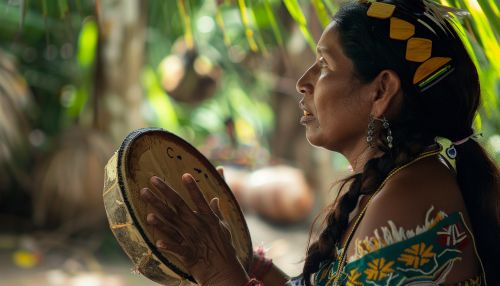Indigenous languages of the Americas
Introduction
The indigenous languages of the Americas are a diverse and complex group of languages spoken by the indigenous peoples of North, Central, and South America. These languages are not only a testament to the rich cultural heritage of the continent but also provide valuable insights into the history, migration patterns, and social structures of the indigenous populations. This article delves into the linguistic diversity, classification, historical development, and current status of these languages, offering a comprehensive overview for those interested in exploring this fascinating subject.
Linguistic Diversity
The Americas are home to a vast array of indigenous languages, with estimates ranging from 900 to over 1,200 distinct languages. These languages are distributed across numerous language families and isolates, reflecting the deep historical roots and extensive migrations of indigenous peoples. Some of the most well-known language families include the Algic, Uto-Aztecan, Mayan, Quechuan, and Tupian families.
North America
North America boasts a rich tapestry of indigenous languages, with significant linguistic diversity found among the Native American tribes of the United States, Canada, and Mexico. The Na-Dené family, which includes Athabaskan, Tlingit, and Eyak, is one of the major language families in this region. Other prominent families include the Algic, Iroquoian, and Siouan families.
Central America
Central America is home to several important language families, including the Mayan and Oto-Manguean families. The Mayan languages, spoken by the Maya peoples, are particularly notable for their complex hieroglyphic writing system and rich literary tradition. The Oto-Manguean family, which includes languages such as Zapotec and Mixtec, is known for its tonal systems and intricate phonological structures.
South America
South America exhibits an extraordinary level of linguistic diversity, with numerous language families and isolates spread across the continent. The Quechuan and Aymaran families are among the most widely spoken, particularly in the Andean region. The Tupian family, which includes the Guarani language, is another significant group. Additionally, the Arawakan, Cariban, and Pano-Tacanan families contribute to the rich linguistic mosaic of South America.
Classification
The classification of indigenous languages of the Americas is a complex and ongoing endeavor, with linguists continually refining their understanding of the relationships between these languages. The primary methods of classification include genetic classification, which groups languages based on common ancestry, and typological classification, which categorizes languages based on structural features.
Genetic Classification
Genetic classification aims to identify language families and subfamilies by tracing the historical development and divergence of languages from a common ancestor. Some of the major language families in the Americas include:
- Algic: Encompassing languages such as Algonquian and Wiyot.
- Uto-Aztecan: Including languages like Nahuatl and Hopi.
- Mayan: Comprising languages such as Yucatec Maya and K'iche'.
- Quechuan: Featuring languages like Quechua and Cuzco Quechua.
- Tupian: Including languages such as Tupi and Guarani.
Typological Classification
Typological classification examines the structural features of languages, such as phonology, morphology, syntax, and semantics, to identify patterns and similarities. This approach can reveal interesting insights into the linguistic diversity of the Americas, such as the prevalence of polysynthetic languages, which use complex word forms to convey detailed information. Examples of polysynthetic languages include the Inuktitut and Mohawk languages.
Historical Development
The historical development of indigenous languages in the Americas is closely tied to the migration and settlement patterns of indigenous peoples. Linguistic evidence, combined with archaeological and genetic data, provides a window into the ancient movements and interactions of these populations.
Pre-Columbian Era
Before the arrival of Europeans, the Americas were home to a vast array of indigenous cultures and languages. The development of agriculture, trade networks, and complex societies contributed to the diversification and spread of languages. For example, the Maya civilization developed a sophisticated writing system and literature, while the Inca Empire used the Quechua language for administration and communication across its vast territory.
Colonial Period
The colonial period brought significant changes to the linguistic landscape of the Americas. European colonization, along with the introduction of new languages such as Spanish, Portuguese, English, and French, led to the decline and displacement of many indigenous languages. However, some languages, such as Nahuatl and Guarani, managed to survive and adapt, often becoming important lingua francas in their respective regions.
Modern Era
In the modern era, indigenous languages face numerous challenges, including language shift, loss of speakers, and the dominance of national and global languages. Efforts to revitalize and preserve these languages have gained momentum, with initiatives such as language documentation, education programs, and community-driven projects playing a crucial role.


Current Status
The current status of indigenous languages in the Americas varies widely, with some languages thriving while others are critically endangered. Factors influencing the vitality of these languages include the number of speakers, intergenerational transmission, and the presence of supportive policies and programs.
Language Endangerment
Many indigenous languages are classified as endangered, with some on the brink of extinction. The UNESCO Atlas of the World's Languages in Danger provides a comprehensive overview of the status of these languages, highlighting the urgent need for preservation efforts. Factors contributing to language endangerment include urbanization, globalization, and the assimilation policies of national governments.
Revitalization Efforts
Revitalization efforts are crucial for the survival and flourishing of indigenous languages. These efforts often involve a combination of language documentation, education, and community engagement. For example, the Wampanoag language, once considered extinct, has been successfully revived through the Wôpanâak Language Reclamation Project. Similarly, the Hawaiian language has seen a resurgence through immersion schools and cultural programs.
Legal and Policy Frameworks
Supportive legal and policy frameworks can play a significant role in the preservation and promotion of indigenous languages. International instruments such as the United Nations Declaration on the Rights of Indigenous Peoples (UNDRIP) recognize the rights of indigenous peoples to maintain and develop their languages. National and regional policies, such as the Native American Languages Act in the United States and the Indigenous Languages Act in Canada, also provide important support for language revitalization efforts.
Conclusion
The indigenous languages of the Americas represent a rich and diverse linguistic heritage that is integral to the cultural identity and history of indigenous peoples. While many of these languages face significant challenges, ongoing efforts to document, revitalize, and promote them offer hope for their future. By understanding and supporting these languages, we can contribute to the preservation of a vital aspect of human diversity.
